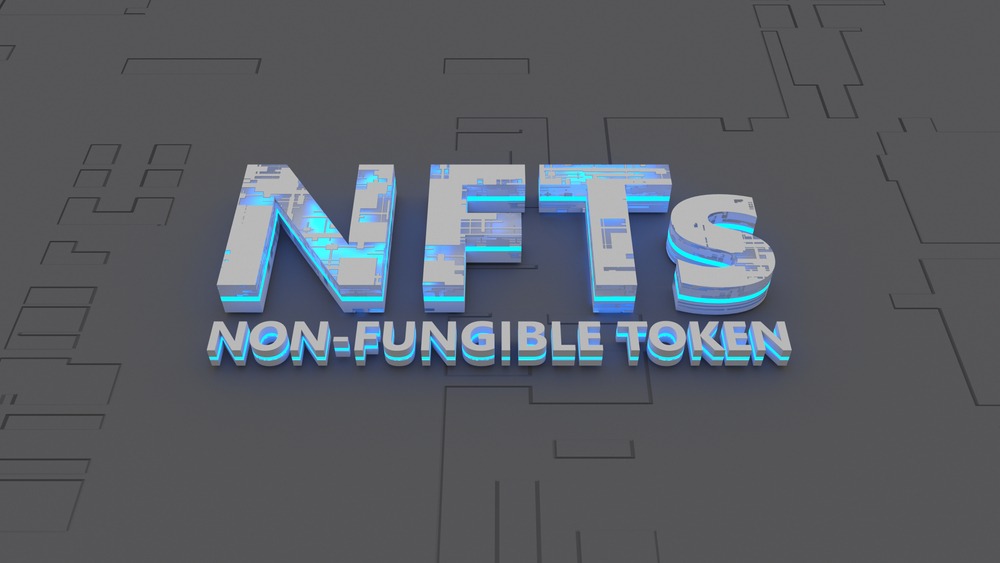Initial Coin Offerings (ICOs) have emerged as a groundbreaking method for startups to raise capital in the rapidly evolving world of blockchain and cryptocurrency.
This innovative fundraising mechanism allows fledgling companies to issue tokens, bypassing the traditional hurdles associated with venture capital investment and banking. However, the landscape of ICOs is complex, marked by remarkable successes and notable failures.
In this article, we will delve into the fundamentals of ICOs, their comparison with Initial Public Offerings (IPOs), the key blockchain platforms they operate on, and the myriad risks and challenges they face.
The ICO Phenomenon: A Brief Overview
An ICO is a launchpad for blockchain startups, offering a direct path to capital acquisition through token issuance. These tokens, integral to the project’s ecosystem, are digital assets offering various utilities without conferring ownership or control over the company’s direction.
A crucial document in any ICO is the white paper outlining the project’s vision, technology, and roadmap, laying the foundation for potential growth and investor confidence. Despite their appeal for raising funds and democratising investment, ICOs have been marred by a tarnished reputation, largely from exit scams and unethical practices that peaked between 2017 and 2018.
Ethereum and NEO: Pioneers of the ICO Landscape
Most ICOs have found a home on Ethereum, leveraging its robust smart contract protocol to create ERC-20 tokens with diverse functionalities tailored to their specific ecosystems. Ethereum’s open and flexible platform has made it the go-to choice for many startups.
However, NEO, often dubbed the “Ethereum of China,” presents a compelling alternative. With its focus on scalability and compatibility with common programming languages, NEO offers an enticing option for projects looking to break free from Ethereum’s limitations.
ICOs vs IPOs: What’s The Difference

ICOs (Initial Coin Offerings) and IPOs (Initial Public Offerings) are both methods used by companies to raise capital, but they operate in significantly different ways:
1. Regulation:
IPOs are heavily regulated by government agencies, such as the Securities and Exchange Commission (SEC) in the United States. Companies must meet strict legal requirements and disclose detailed financial information before going public.
On another side, ICOs are typically less regulated, although this has been changing in some jurisdictions. They often bypass traditional regulatory processes, which has led to concerns about investor protection and regulatory compliance.
2. Ownership:
In an IPO, companies issue shares of their stock to investors in exchange for capital. Investors then become partial owners of the company and typically have voting rights and the potential to receive dividends.
In an ICO, companies issue digital tokens or coins to investors. These tokens may represent a stake in the project, access to a product or service, or other rights within the ecosystem. However, they often do not represent ownership in the company itself.
3. Investor Base:
IPOs are typically targeted at institutional investors, such as mutual funds, pension funds, and banks, as well as individual investors.
However, ICOs have historically attracted a broader range of investors, including both institutional investors and retail investors. They have also been popular among cryptocurrency enthusiasts and speculators.
4. Access to Capital:
IPOs are generally conducted by established companies with a track record of financial performance. They are often used to raise large amounts of capital to fund growth initiatives, repay debt, or provide liquidity to existing shareholders.
ICOs are often used by startups and early-stage companies to raise capital for new projects or ventures. They can be a faster and more accessible way for companies to raise funds, especially in industries where traditional financing may be difficult to obtain.
Risks and Challenges Associated With ICOS

The ICO ecosystem has burgeoned with promises of revolutionary projects and unparalleled investment opportunities. However, it’s also been marred by a litany of high-profile frauds, exemplified by notorious cases like OneCoin’s multi-billion dollar Ponzi scheme and BitConnect’s rapid collapse.
These incidents serve as sobering reminders of the inherent risks within the ICO space. Take, for instance, Centra Tech’s $25 million fraud, which was built upon false claims of technological prowess and nonexistent partnerships. Such instances underscore the critical need for thorough due diligence and regulatory scrutiny before engaging in ICO investments.
The cases of Pincoin, iFan, and PlexCoin further accentuate the audacious promises and deceitful tactics employed by fraudsters to entice unwitting investors. Beyond fraud, ICOs face a myriad of other challenges, including regulatory ambiguity, market volatility, and the prevalence of inexperienced or unscrupulous project teams.
Regulatory uncertainties can cast a shadow over the legitimacy of ICO projects, leading to potential legal repercussions and investor distrust. Moreover, the lack of regulatory oversight leaves investors vulnerable to market manipulation and fraudulent activities.
Additionally, the inherently speculative nature of ICO investments exposes participants to significant market fluctuations and the risk of losing their entire investment. To navigate these challenges, stakeholders must exercise caution, conduct thorough research, and adhere to regulatory guidelines to mitigate the risks associated with ICOs.
Navigating ICO Investments: A Pragmatic Approach

Investing in Initial Coin Offerings (ICOs) can be a lucrative opportunity, but it also carries significant risks. Here’s a pragmatic approach to navigate ICO investments:
1. Understand the Project:
Thoroughly research the ICO project. Read the whitepaper and understand the problem it aims to solve, the technology behind it, the team members, and their expertise. Look for transparency in their communication and assess whether the project seems feasible and sustainable.
2. Evaluate the Team:
The success of an ICO often depends on the competence and experience of the team behind it. Look into the backgrounds of the founders, developers, and advisors. Verify their credentials and previous work experience in relevant fields.
3. Assess Market Potential:
Analyse the market demand for the project’s product or service. Consider the competition and whether the project offers a unique value proposition. Evaluate the potential for mass adoption and long-term viability.
4. Review the Token Economics:
Understand the utility of the token being offered in the ICO. Assess how the token will be used within the ecosystem and whether there is a genuine need for it. Evaluate the token distribution model, including allocations for the team, advisors, and the community.
5. Check Legal Compliance:
Ensure that the ICO complies with relevant regulations in the jurisdictions it operates in. Look for legal opinions or statements from legal experts confirming compliance with securities laws.
6. Scrutinise the Roadmap:
Examine the project’s roadmap and development milestones. Evaluate whether the team has a clear execution plan and whether they have already achieved significant milestones.
7. Assess Community Engagement:
Gauge the level of community support and engagement around the project. Active communities can indicate a strong user base and potential for growth. Participate in forums, social media channels, and community events to get a sense of the project’s reputation.
8. Perform Due Diligence:
Conduct thorough due diligence before investing any funds. Look for red flags such as plagiarised content, lack of a credible team, or unrealistic promises. Consider seeking advice from experts or joining investment groups to share insights and experiences.
By following these steps and maintaining a cautious approach, you can increase your chances of making informed decisions and navigating the complexities of ICO investments effectively. Remember that while ICOs offer exciting opportunities, they also come with inherent risks, so always proceed with caution.
The Tokenised IPO: Merging Traditional Finance with Blockchain

The tokenised IPO represents a groundbreaking intersection of traditional finance and blockchain technology. In this model, shares of a company are digitised and represented as tokens on a blockchain, allowing for decentralised trading and management.
One of the primary advantages of tokenised IPOs is increased accessibility. By enabling fractional ownership, smaller investors can participate in IPOs that were previously inaccessible due to high minimum investment requirements. This democratisation of access aligns with the ethos of blockchain, empowering individuals to engage in investment opportunities.
Furthermore, tokenised IPOs enhance liquidity in the market. Shares can be traded on blockchain-based platforms swiftly and efficiently compared to traditional exchanges. This increased liquidity benefits both investors and companies, facilitating a more efficient price discovery process and reducing transaction costs.
Cost efficiency is another key benefit. Tokenised IPOs streamline the issuance process, automating many administrative tasks and potentially reducing underwriting fees and regulatory compliance expenses. This cost savings benefits both companies and investors, making capital raising and investing more efficient.
Additionally, the global reach of tokenised IPOs is unparalleled. Blockchain technology enables borderless transactions, allowing investors from around the world to participate without geographic restrictions. This globalisation of investment opportunities can foster greater diversification and broaden the investor base.
Security Token Offerings (STOs) – What Is It?

In recent years, blockchain technology has ushered in a new era of fundraising mechanisms, among which Security Token Offerings (STOs) have emerged as a significant innovation. Unlike their predecessor, ICOs, STOs provide higher protection and transparency by offering a digital representation of ownership in assets and economic rights.
STOs represent a convergence of traditional financial securities and innovative blockchain technology. They offer digital tokens representing ownership or interest in real-world assets, such as real estate, fine art, or company equity. What sets STOs apart is their adherence to securities laws, requiring approval by national financial supervisory authorities.
This compliance ensures STOs offer benefits similar to securities, like profit sharing, dividends, voting rights, and equity, providing investor advantages. In March 2018, the Praetorian Group launched the first STO, significantly transforming the blockchain’s role in regulated financial instruments.
Legal Framework: Navigating Through Global Jurisdictions
The legal landscape for STOs varies widely; notably, Germany, Luxembourg, and Estonia have created favourable environments for their issuance. These countries have recognised the potential of STOs in enhancing transparency, reducing fraud, and increasing the efficiency of capital raising. Compliance with jurisdiction-specific security laws is paramount, ensuring legal viability and boosting investor confidence in these offerings.
Advantages of STOs: Efficiency, Accessibility, and Security
STOs have gained traction as a more regulated and secure alternative toICOs. Here are the advantages of STOs in terms of efficiency, accessibility, and security:
- Regulatory Compliance: STOs adhere to securities laws, providing legal protections and regulatory oversight for investors.
- Efficiency and Automation: Smart contracts streamline issuance and management, reducing costs and accelerating processes.
- Fractional Ownership: STOs enable fractional ownership of assets, increasing accessibility to traditionally illiquid investments.
- Global Accessibility: Blockchain technology allows global participation, enhancing market liquidity and diversification opportunities.
- Enhanced Security: Backed by tangible assets or equity, STOs offer intrinsic value, and blockchain’s security features mitigate fraud risks.
- Liquidity Improvements: Secondary trading on regulated exchanges increases liquidity, enabling easier buying and selling of tokens.
Overall, STOs offer a regulated, efficient, and secure method for investment and capital raising, with the potential to revolutionise financial markets.
Launching an STO: A Phased Approach

Launching a Security Token Offering (STO) requires a systematic, phased approach to ensure regulatory compliance, investor trust, and successful fundraising. Here’s a concise plan:
1. Preparation Phase:
- Legal & Regulatory Compliance: Engage legal counsel to navigate securities laws and regulations.
- Token Design: Define the security token’s attributes, such as ownership rights and profit-sharing mechanisms.
- Smart Contract Development: Create a robust smart contract to govern token issuance and transactions securely.
- Due Diligence: Conduct thorough due diligence on the project, including financial audits and security assessments.
2. Marketing & Investor Outreach:
- Target Audience Identification: Identify potential investors interested in the project’s sector and value proposition.
- Educational Content: Produce informative materials about the STO, including whitepapers, pitch decks, and website content.
- Roadshows & Events: Attend industry conferences and organise roadshows to present the STO to potential investors.
- Regulatory Compliance Communication: Ensure clear communication with investors regarding regulatory compliance measures.
3. Token Sale Execution:
- Platform Selection: Choose a reputable issuance platform that complies with regulatory standards.
- KYC & AML Compliance: Implement robust Know Your Customer (KYC) and Anti-Money Laundering (AML) procedures for investor verification.
- Token Distribution: Coordinate the distribution of tokens according to the terms outlined in the smart contract.
- Escrow Services: Utilises escrow services to safeguard investor funds until the completion of the token sale.
4. Post-STO Operations:
- Secondary Market Development: Facilitate liquidity by listing tokens on compliant secondary trading platforms.
- Investor Relations: Maintain transparent communication with investors through regular updates and reporting.
- Regulatory Compliance Reporting: Fulfill ongoing regulatory reporting requirements to maintain compliance.
By following this phased approach, issuers can navigate the complexities of launching an STO successfully, fostering investor confidence and ensuring legal compliance throughout the process.
Conclusion
In conclusion, Initial Coin Offerings (ICOs) have revolutionised capital raising for startups in the blockchain and cryptocurrency space. While offering an innovative alternative to traditional funding methods, ICOs have inherent risks and complexities. The landscape of ICOs is marked by successes and failures, with notable cases highlighting fraud and regulatory challenges.
However, the emergence of Security Token Offerings (STOs) presents a regulated and secure alternative, bridging the gap between traditional finance and blockchain technology. Navigating the world of ICOs and STOs requires careful due diligence, regulatory compliance, and a pragmatic investment approach. Ultimately, while ICOs have paved the way for disruptive fundraising, STOs offer a promising avenue for secure and compliant capital raising in the blockchain era.
















